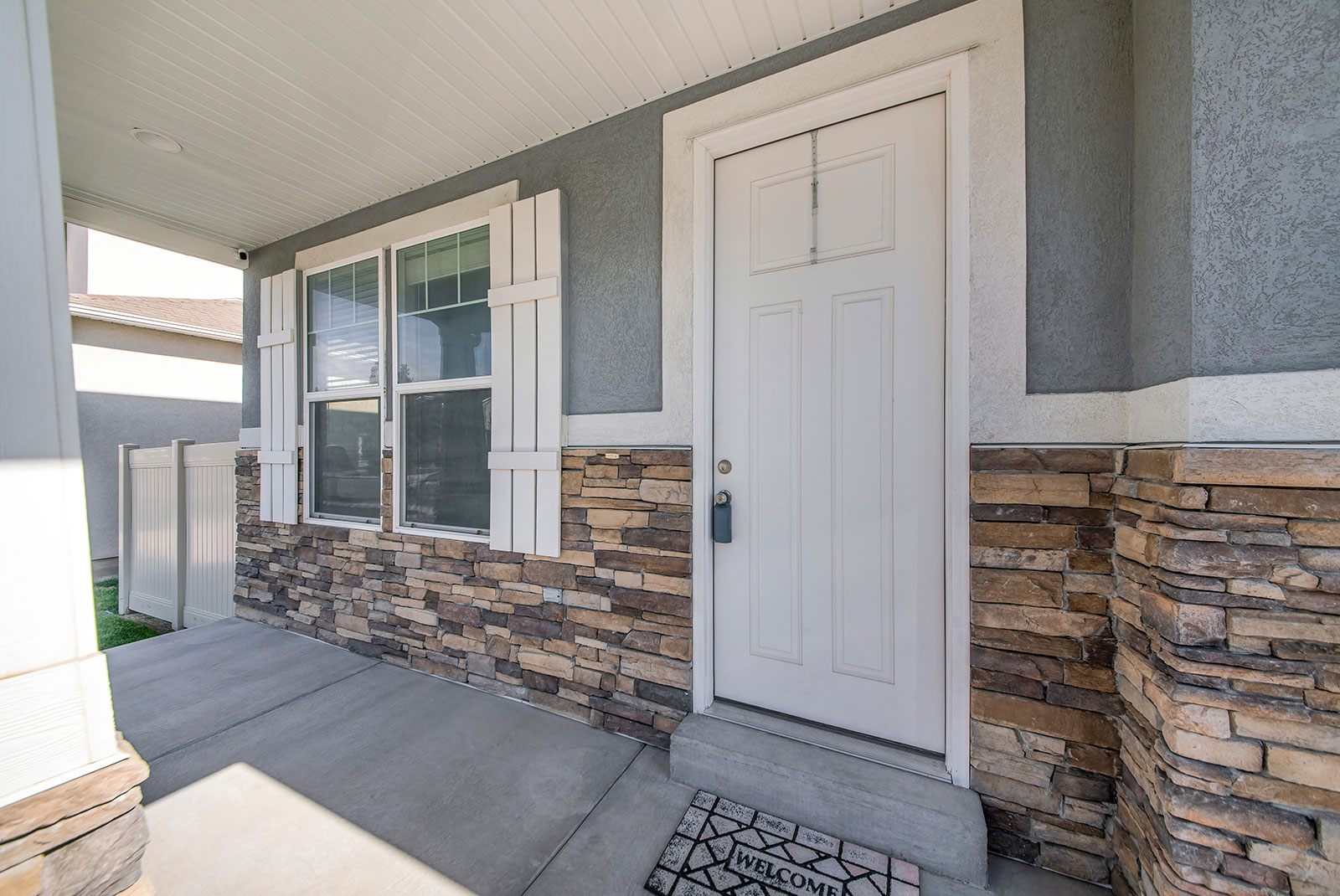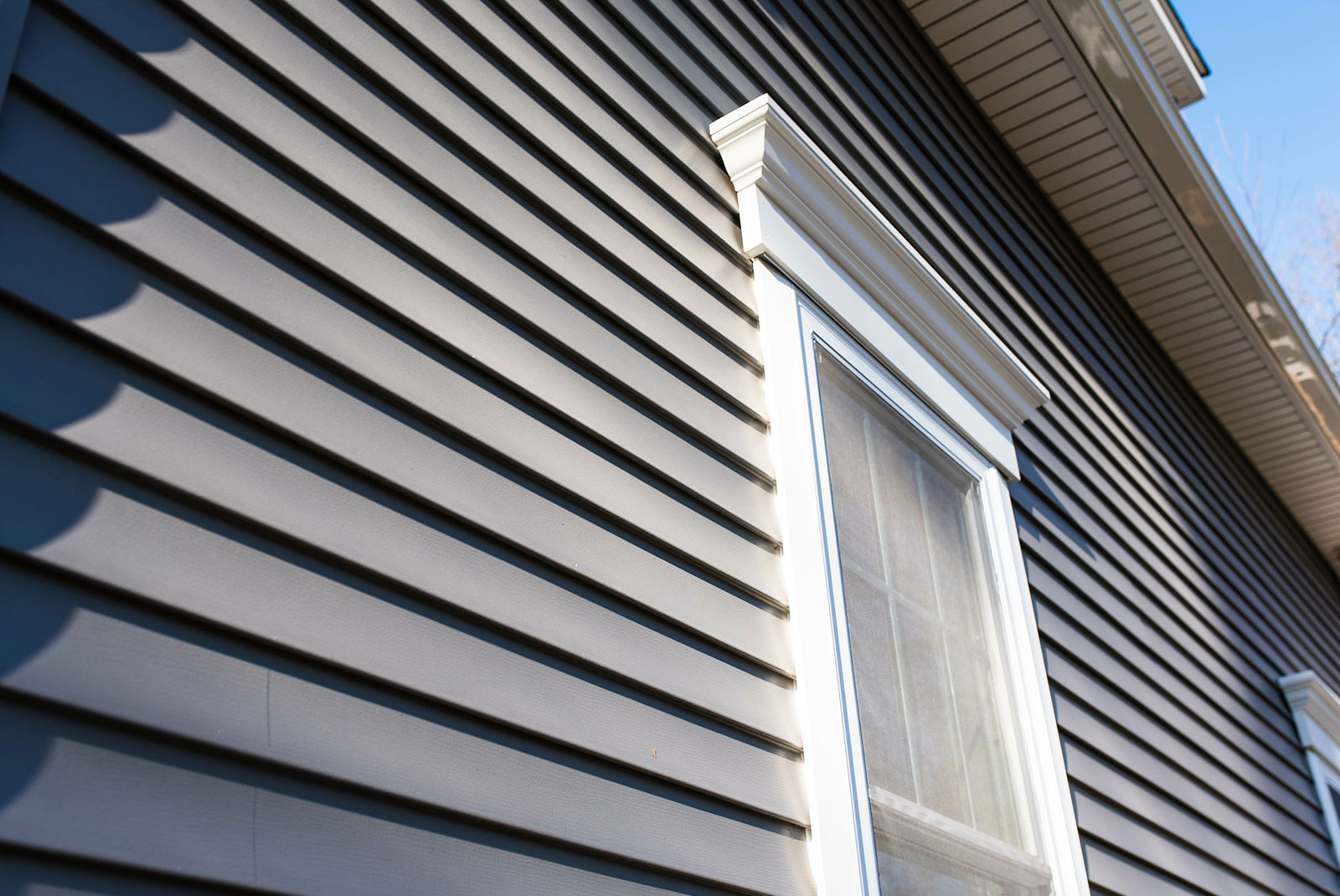
Key insights:
- Historically, home sellers invested in improvement projects before listing to generate more interest in their property.
- Today’s sellers hold a keen advantage in the market, so they should be sure to update only what is necessary before listing their home for sale.
- Data shows that some of the least expensive projects — such as a new garage door or a new front door — can have the greatest impact on a sale.
You’ve likely seen the headlines: Today’s sellers are getting 99.3% of their asking price in the past 12 months, which means that they hold a big advantage in today’s market. With this news, you may not plan to update anything on your property before you list it for sale. If your home is in the right neighborhood and in good condition, this may be just fine! But if your home is outdated, you may get an even higher bid if you give it a little polish before selling.
But which projects can have the biggest impact for sellers? Shouldn’t some updates be reserved for homeowners who plan to stay in their homes and enjoy them for a few years?
These are the questions we asked as we dove into the 2023 Cost vs. Value Report (www.costvsvalue.com). This exhaustive report details the cost and value of home improvement projects across the country, and they even break the data out by region and city.
Based on that report, here are the projects Twin Cities homeowners should take on if they want to recoup the most on their initial investment.
1. Fiberglass grand entrance

Cost: $10,823
Resale value: $5,238
Cost recouped: 97.5%
Replacing a standard entry door with a more grand entrance can add a lot of curb appeal to your property. Fiberglass’ unique material keeps it energy-efficient and durable while being highly customizable, even able to mimic wood grain.
Start by removing the standard entry door and then cut and reframe the door opening for a larger door with dual sidelights. Customize the entrance with upscale finishes like color, threshold, lockset and decorative half-glass with sidelights.
An upscale fiberglass entry adds a big “wow” and should only take a day to complete.
2. HVAC conversion to electric

Cost: $18,328
Resale value: $17,615
Cost recouped: 96.1%
If your system is in need of an update, converting to an electric HVAC operating system may be a sound investment.
While not the most glamorous home update, a new HVAC system that runs on electric instead of gas can offer a big return when it comes to home resale. An electric HVAC system improves air quality and lowers energy bills over time. Switching to an electrically-powered system provides greater safety and peace of mind than their gas-powered counterparts, which produce carbon monoxide. They also have a longer life span and are energy-efficient while operating quietly and providing lower maintenance costs.
In addition to having lower upfront costs to install, tax incentives and rebates may help lower your initial bills.
3. Manufactured stone veneer

Cost: $11,463
Resale value: $10,582
Cost recouped: 92.3%
If you’ve seen new construction homes over the last few years, you know that partial stone veneers are all the rage. Current homeowners can also freshen up an aging exterior by adding a stone veneer accent to the bottom third of their home.
To complete this project, you’ll first remove the bottom third of siding from the street-facing side of your home exterior then replace this area with a stone veneer, including sills, 40 corners, an address block and a detailed faux-stone archway around the front door. The installation also includes protection against water damage and corrosion.
You’ll be amazed at how this easy stone addition gives your home’s exterior a modern facelift!
4. Siding replacement (vinyl)

Cost: $17,813
Resale value: $15,950
Cost recouped: 89.5%
New siding can be a big selling point to potential buyers. It not only aesthetically updates a home and adds curb appeal, but when using vinyl, can add additional benefits like preventing pests and adding insulation for more energy efficiency.
Installing vinyl can mean years of maintenance-free living for owners. Vinyl is durable, low-maintenance and comes in a wide variety of colors and textures to best showcase a home.
As a benefit to sellers, it’s also cost-effective and easy to install. Note that not all vinyl siding is the same, and you’ll want to pay close attention to creating a water-resistant barrier.
5. Minor, mid-range kitchen remodel

Cost: $27,009
Resale value: $22,784
Cost recouped: 84.4%
A modest kitchen upgrade can better maximize space, increase accessibility and provide enough of a cosmetic improvement to bring a dated kitchen back to life.
Replacing a number of key appliances, cabinet/drawer faces and hardware, along with cost-effective flooring and counters and a fresh coat of paint on walls, trim and ceiling can offer buyers a blank slate that showcases the functionality of a crucial space.
Voila! A not-too-expensive update that saves you the cost of all new cabinetry or high-end finishes.
Want more info on the ROI of home projects?
We’ve detailed the five projects with the highest return on investment, but the 2023 Cost vs. Value Report also shared the five projects with the lowest ROI in the Twin Cities. If you plan to move soon, you may want to avoid adding an owner’s suite or a brand-new bathroom.
Here are the home improvement projects with the lowest ROI locally:
- Upscale owner’s suite addition (22.8% recouped from budget of $338,195)
- Upscale bathroom addition (25.6% of $109,772)
- Mid-range bathroom addition (27.2% of $60,592)
- Mid-range owner’s suite addition (30.0% of $163,887)
- Upscale major kitchen remodel (31.1% of $152,918)
Wondering what other remodeling projects were reviewed for the Minneapolis region? Check out the complete 2023 Cost vs. Value Report for our area.
Get expert guidance before you sell
Keep in mind that it may be smartest to take on higher-cost, lower-ROI projects only if you plan to be in the home for a few more years. After all, your own enjoyment of these projects can certainly count as a return on your investment!
However, if your updates are solely intended to sell your home faster or for more money, let’s talk before you begin renovations. Reach out for advice on the most cost-effective, impactful changes you can make to your property.
Complete data from the 2023 Cost vs. Value Report can be downloaded free at www.costvsvalue.com, Distributed by Remodeling by JLC, ©2024 Zonda Media, a Delaware corporation.












 Equal Housing Lender | Prosperity Home Mortgage, LLC may operate as Prosperity Home Mortgage, LLC dba Edina Realty Mortgage in Minnesota and Wisconsin. ©2024 Prosperity Home Mortgage, LLC dba Edina Realty Mortgage. (877) 275-1762. 3060 Williams Drive, Suite 600, Fairfax, VA 22031. All first mortgage products are provided by Prosperity Home Mortgage, LLC. Not all mortgage products may be available in all areas. Not all borrowers will qualify. NMLS ID #75164 (For licensing information go to: NMLS Consumer Access at http://www.nmlsconsumeraccess.org/) Licensed by the Department of Financial Protection and Innovation under the California Residential Mortgage Lending Act. Licensed by the Delaware State Bank Commissioner. Georgia Residential Mortgage Licensee. Massachusetts Mortgage Lender and Mortgage Broker MC75164. Licensed by the NJ Department of Banking and Insurance. Licensed Mortgage Banker-NYS Department of Financial Services. Rhode Island Licensed Lender. Rhode Island Licensed Loan Broker. Rhode Island Licensed Third-Party Loan Servicer. Also licensed in AK, AL, AR, AZ, CO, CT, DC, FL, ID, IL, IN, KS, KY, LA, MD, ME, MI, MN, MO, MS, MT, NC, ND, NE, NH, NM, NV, OH, OK, OR, PA, SC, SD, TN, TX, UT, VA, VT, WA, WI, WV and WY.
Equal Housing Lender | Prosperity Home Mortgage, LLC may operate as Prosperity Home Mortgage, LLC dba Edina Realty Mortgage in Minnesota and Wisconsin. ©2024 Prosperity Home Mortgage, LLC dba Edina Realty Mortgage. (877) 275-1762. 3060 Williams Drive, Suite 600, Fairfax, VA 22031. All first mortgage products are provided by Prosperity Home Mortgage, LLC. Not all mortgage products may be available in all areas. Not all borrowers will qualify. NMLS ID #75164 (For licensing information go to: NMLS Consumer Access at http://www.nmlsconsumeraccess.org/) Licensed by the Department of Financial Protection and Innovation under the California Residential Mortgage Lending Act. Licensed by the Delaware State Bank Commissioner. Georgia Residential Mortgage Licensee. Massachusetts Mortgage Lender and Mortgage Broker MC75164. Licensed by the NJ Department of Banking and Insurance. Licensed Mortgage Banker-NYS Department of Financial Services. Rhode Island Licensed Lender. Rhode Island Licensed Loan Broker. Rhode Island Licensed Third-Party Loan Servicer. Also licensed in AK, AL, AR, AZ, CO, CT, DC, FL, ID, IL, IN, KS, KY, LA, MD, ME, MI, MN, MO, MS, MT, NC, ND, NE, NH, NM, NV, OH, OK, OR, PA, SC, SD, TN, TX, UT, VA, VT, WA, WI, WV and WY.